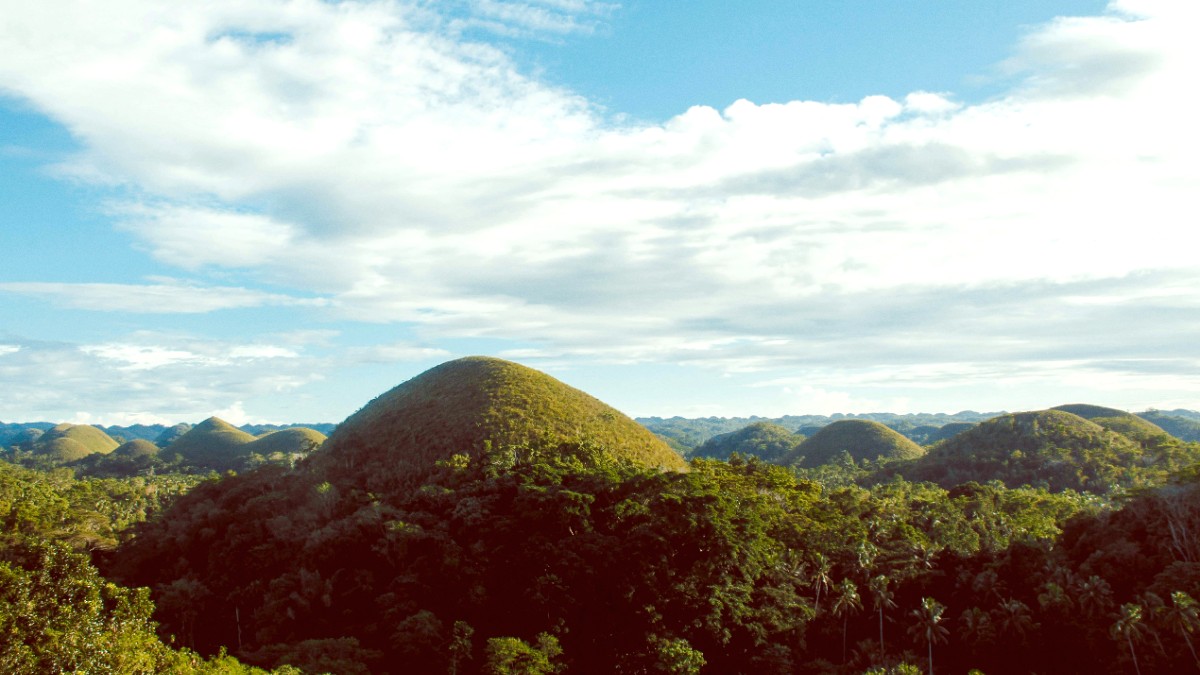
The Visayas, Philippines
Bohol experiences a tropical climate, with warm temperatures year-round. Two distinct seasons shape the island's weather: a dry season and a wet (or rainy) season.
The dry season (November/December to May) has less rainfall, lower humidity, and cooler temperatures (26-32°C). Days are sunny, with calm seas, ideal for outdoor and water activities. The wet season (June to October/November) presents more frequent, heavier rainfall and higher humidity (27-33°C).
The Philippines is prone to typhoons, especially from July to October. While Bohol is less directly hit than northern Luzon, indirect effects like heavy rain, strong winds, and disrupted ferry services may occur. Pay attention to weather advisories.
April and May often experience peak temperatures, which some travelers might find intense. Tarsier and Chocolate Hills viewing remains possible year-round, with the latter showing green in wet season and brown in dry season.
Potential for travel disruptions
Compared to northern regions, Bohol typically sees fewer direct typhoon landfalls.
Heavy rain, strong winds, and disrupted ferry services still possible.
April and May are hottest
Tarsier and Chocolate Hills viewing possible any time.
Some travelers might find April-May temperatures uncomfortably warm.
Seasonal variations
Lush green appearance during the wet months.
Distinct chocolate brown during the dry months.
Many nationalities, including citizens of the US, Canada, UK, Australia, New Zealand, and most EU countries, enjoy a visa-free stay for 30 days. This means no advance visa application is needed for stays of 30 days or less.
For stays exceeding 30 days, or for nationalities not on the visa-free list, you must obtain a visa in advance from a Philippine embassy or consulate in your home country. Begin this process well before your travel date. Extensions for visa-free stays are typically available at the Bureau of Immigration offices in the Philippines.
At least six months validity beyond planned stay.
Proof of confirmed departure from the Philippines.
Evidence of financial capacity for your visit.
Complete online within 72 hours of arrival for a QR code.
Apply via embassy/consulate in advance.
Costs in Bohol vary based on your travel style. This section provides an overview of currency, typical expenses, and ways to save money.
The official currency is the Philippine Peso (PHP), symbolized by ₱ or PHP. Major currencies are exchangeable at airports, banks, and authorized money changers in Tagbilaran City and Alona Beach.
Your daily expenses in Bohol vary widely based on your travel style, from budget-friendly local experiences to luxurious getaways.
Tipping is not strictly mandatory but finds appreciation for good service, especially in tourist areas. A 10% service charge often appears on restaurant bills.
Bohol is a safe destination, but like any travel, preparation and awareness remain prudent. This section covers health precautions, safety tips, and emergency information.
No vaccinations are strictly required for entry to the Philippines from most countries, unless arriving from a yellow fever-endemic area. Consult a medical professional for recommended vaccinations before your trip.
Routine vaccinations, Hepatitis A & B, Typhoid, Rabies, and Japanese Encephalitis are often suggested based on travel plans.
Tagbilaran City features several hospitals, including public and private facilities that offer general medical services. For serious emergencies or specialized care, evacuation to Cebu City or Manila may prove necessary.
Smaller clinics are available in Panglao for minor ailments.
Ensure comprehensive travel insurance covering medical evacuation.
Tap water generally falls short of drinking standards in Bohol. Opt only for bottled water, boiled water, or water from reputable refilling stations. Many accommodations offer purified water.
Eat at busy establishments; ensure food is hot and freshly cooked.
Avoid ice in drinks unless the source is confirmed. Be wary of uncooked produce washed in tap water.
Bohol generally is a safe destination for tourists; violent crime against visitors remains rare. Petty crime, like pickpocketing or bag snatching, may occur in crowded areas.
Remain aware of surroundings; agree on prices beforehand with drivers.
Typhoons (July-Oct) and earthquakes (less frequent) represent natural hazards.
| Service | Number | Note |
|---|---|---|
| National Emergency Hotline | 911 | Direct access to emergency services |
| Philippine National Police (PNP) | 117 (or 911) | General police assistance |
| Bohol Provincial Police Office | +63 (38) 501-8316 | Local police contact |